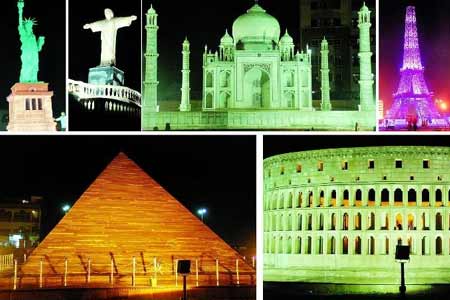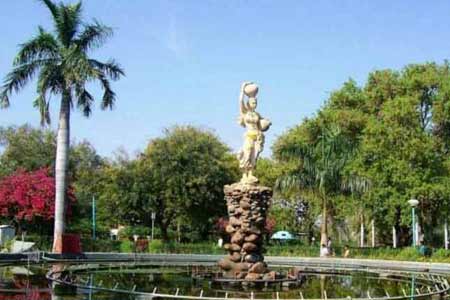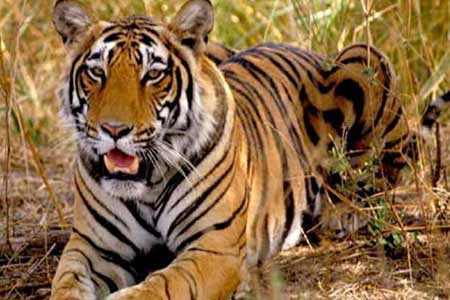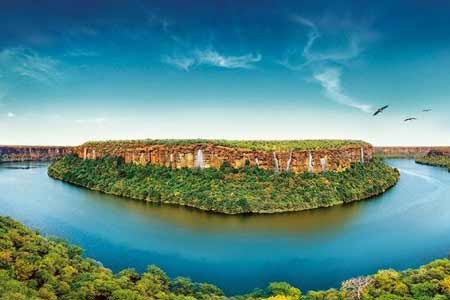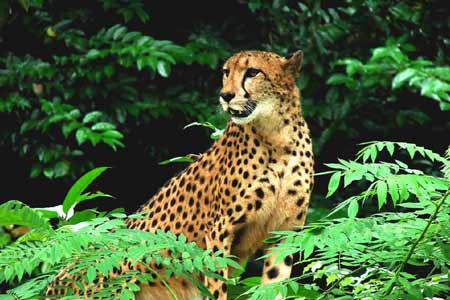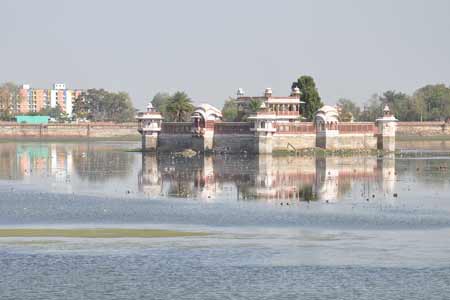
Kota Barrage
Kota Barrage is the fourth in the series of Chambal Valley Projects, located about 0.8 km upstream of Kota City in Rajasthan. Water released after power generation at Gandhi Sagar, Rana Pratap Sagar and Jawahar Sagar Dams, is diverted by Kota Barrage for irrigation in Rajasthan and in Madhya Pradesh through canals on the left and the right sides of the river. The work on this dam was completed in 1960.
The total catchment area of Kota Barrage is 27,332 km2, of which the free catchment area below Jawahar Sagar Dam is just 137 km2. The live storage is 99 Mm3. It is an earthfill dam with a concrete spillway. The right and left main canals have a headworks discharge capacity of 188 and 42 m3/sec, respectively. The total length of the main canals, branches and distribution system is about 2,342 km, serving an area of 229 kha of CCA.50% of the water intercepted at Kota Barrage has been agreed to be diverted to MP for irrigation.
It is one of the main water reservoirs of Rajasthan, spreading in an area of 27,332 sq. kms, it is larger than Haiti, serving an important purpose. Its main function is of diverting the water dispersed from power generating dams like Gandhi Sagar Dam, Rana Pratap Sagar Dam and Jawahar Sagar Dam to Madhya Pradesh and Rajasthan. It is done via canals and minors built to deliver the water to the states. Kota Barrage is the main source of water for irrigation to them, serving as a lifeline to many associated with it.
The massive froth and vibrations of the released waters from the 19 gates of the dam provide local attraction. The months of monsoon are greatly preferred by planners who wish to get a glimpse of the thrashing waters which rise up to two times than normal during monsoons. The beauty of the flowing waters provide a cooling attraction and visitors can witness gorgeous sun rise and sun set here. Swimming and boating are common activities conduct even though warnings are given out to tourists before the gates of the dam are opened which raise the level of the water significantly.
The place is open 24 hours all days and can be accessed free of charge. This modern architectural marvel stands tall amidst the natural scenic beauty and mesmerizes all visitors. It is frequently visited by locals and tourists alike, crediting it to its peaceful evenings alongside the river. Visitors may even pay a visit to nearby attractions like that of Kansua Temple of Lord Shiva which houses a rare four-faced deity of Shiva Lingam. Also places like Bhitria Kund, Adhar Shila, Budh Singh Bafna Havely and Yatayat Park can be explored not very far from the dam.
Kota Tourist Attractions
Kota is the third largest city in the state of Rajasthan and is one of the popular tourist destinations. Situated on the banks of the Chambal River, the city of Kota is famous for its distinctive style of paintings, palaces, museums, and places of worship. The city is known for gold jewellery, Doria sarees, silk sarees and the famous Kota stone. The history of Kota dates back to the 12th century when Rao Deva conquered the territory and founded Hadoti. The independent Rajput state of Kota was carved out of Bundi in 1631. The kingdom of Kota had a turbulent history as it was raided by various Mughal rulers, Maharajas of Jaipur and even the Maratha warlords. The city of Kota is well known all over the world for its architectural splendour comprising beautiful palaces, temples and museums which exhibit the grandeur of the foregone era. Kota is the third largest city in the state of Rajasthan and is one of the popular tourist destinations. Situated on the banks of the Chambal River, the city of Kota is famous for its distinctive style of paintings, palaces, museums, and places of worship.
 +91 9549279999
+91 9549279999 
